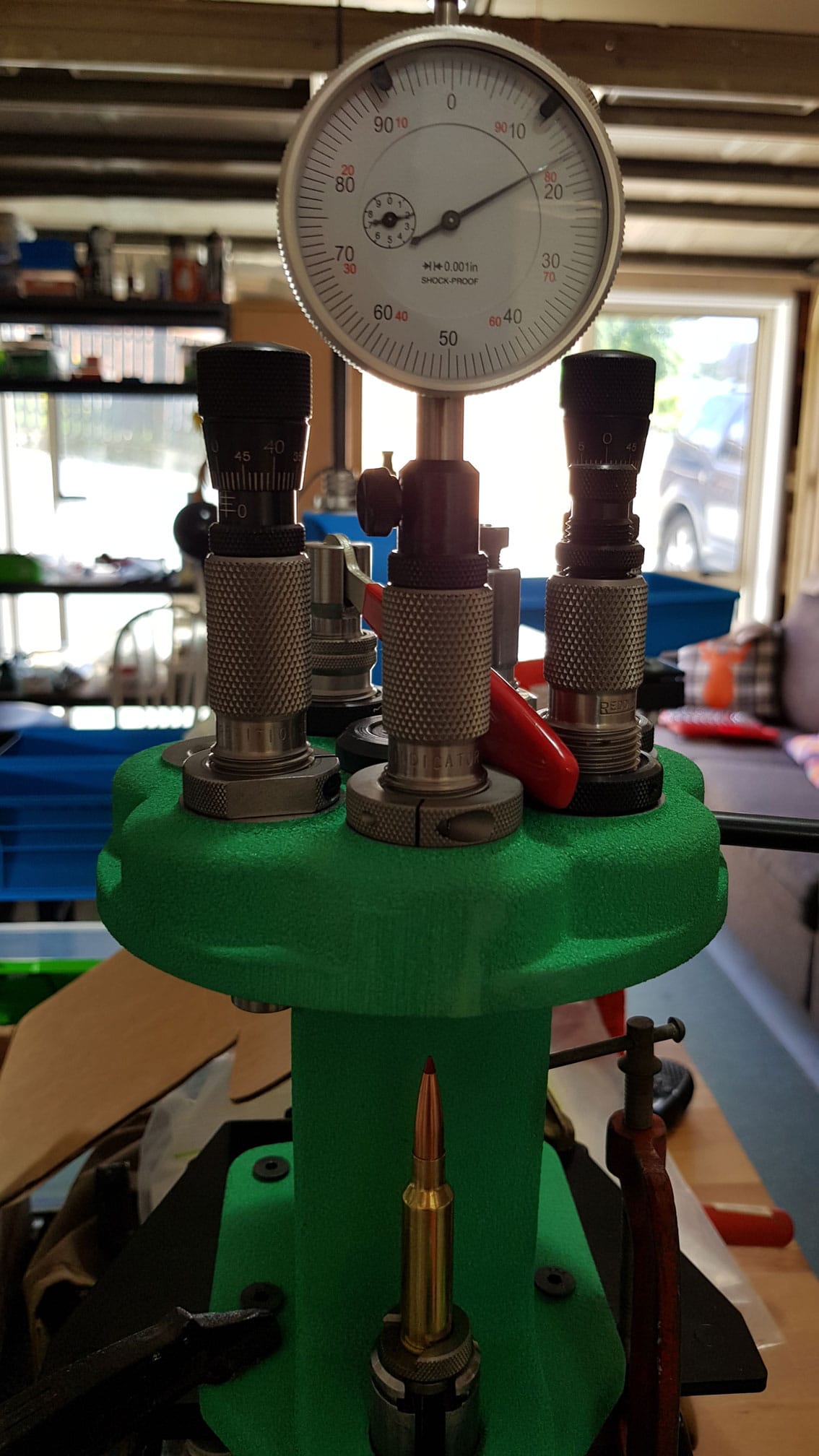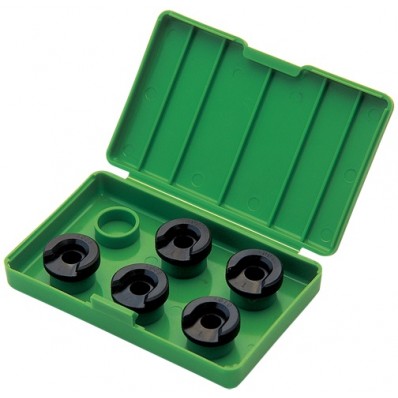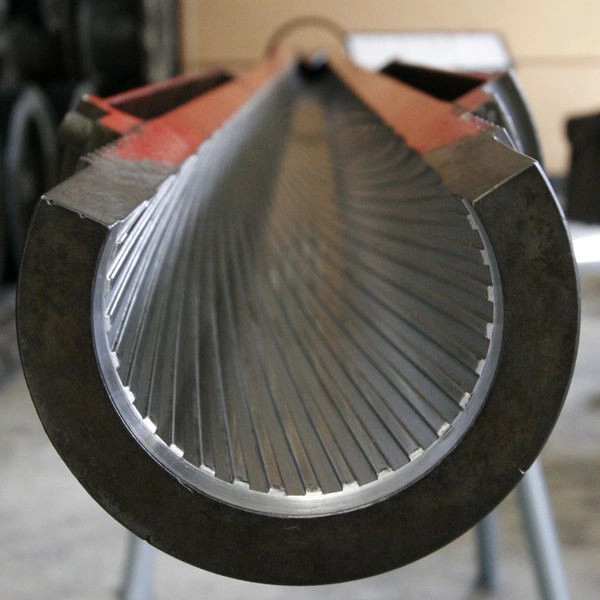Do a google search on Cam-Over in relation to setting up your dies in a reloading press, and you will receive a pile of conflicting and confusing information.
Why is this even a thing?
Read a lot of Sizing Die Setup instruction sheets (yes lads, read the manual) and they will instruct you to
- Raise the ram up all the way
- Screw the die down until it touches the shell holder
- Lower the ram
- Turn the die another 1/4 turn down
And viola – some instruction sheets now describe that the die and press have been set up to cam-over.
As many things in life and the internet are prone to do – this then turned into yet another point of discussion, argument and talking past each other on forums.
People will swear black-and-blue that you have to cam-over, that you should never cam-over, that not all presses can cam-over and that all presses have to, in order to work.
Definitions, definitions are important.
A large, large part of this stems for the definition of the term – many forum threads start going round and round in argumentative circles and you realise that people are using a different fundamental meaning for what camming over means and how it works.
While, in their own way, both definitions are correct, one of them has been borrowed from another industry, and one is much more useful when talking about reloading ammunition.
Cam-Over – Going Beyond True Dead Centre
That most common definition I have found online -and, while technically, kinda correct, isn’t actually what those instructions are referring too. Apply this thinking to those instructions then, and you get the beginnings of some confusion.
Under this definition, there is a point in your press (or at least, some presses) where the ram lifts all the way up, reached TDC (top dead centre) and then will come back down slightly, all while the lever continues on its downstroke.
The point where the ram reaches the TDC and starts coming back down is where the press ‘cams over’.
As such, this becomes a function of press design – with some presses doing it, some not, and some having physical stops on the levers or linkages to stop it happening.
However – question for you – if the press does this, regardless of whether there is a die in there or not – how does it relate to a sizing die setup? There seems to be a little misconception that this point can be affected by screwing in a die, or, somehow, needs to be ‘timed’ to work with the die. Neither of which really seems practical.
Cam-Over – ‘pre-loading’ your press
The second definition I have seen used online goes back to the original instructions for die setup.
The ram is raised completely, the die screwed down, then ram backed off, die dropped slightly more. By doing this, there is a point, when lowering the lever/handle, that the metal on metal contact between the bottom of the die and the top of the shell holder is met, and further pressure either
- does absolutely nothing (if you have really, really screwed that die down)
- the press itself, linkages and general tolerances with the system or taken out with a bit of flex and the handle stops on the physical stop on the press
How this feels will vary from press to press – for example, my Redding T-7 Turret and the Forster Co-Ax both have a definite ‘camming over’ feel when setup like this – while the Dillon 550 doesn’t. There is a lot more movement on the 550 – so it’s more a mush, while the other two have a definite feel of rolling over a point – it should be noted though, in neither case is a ram coming back down at all.
What does Cam Over do?
Well, if we continue on using the second definition, cam-over will take out all the play or slop1 from a reloading press and ensure that there can be no further resizing done with the die – it’s ‘zeroed’ in that it can’t go any further.
Now. It needs to be made quite clear here – that using all the resizing in a die may or may not even be what you want to do. We will talk about that shortly though.
The idea of cam-over though primarily is to get the press to a known state, each time. By pre-loading (which, I think, might be a better term to use in some ways), we know that each ram stroke isn’t influenced by our muscle strength.
As an experiment – if you want to understand the difference here – try setting up a sizing die in your press, raising the ram, screwing down the sizing die tight, but don’t drop ram and turn more. Lube up and put a bit of brass into the die, and raise the ram – there is a really good chance that you will be able to see a tiny sliver of light between the shell holder and die. It’s not there without brass in the system, but introduce that extra bit of metal, and the whole system won’t quite close down like when you set it up.
Do it again with the ‘pre-load’ or ‘cam-over’ setup – that gap likely won’t be there.
Now – you have also potentially just oversized your brass – but that leads to the next point…
So – do I actually need to Cam-Over my press?
Well. That depends on what you want to do, doesn’t it!
We can narrow down our interest to sizing operations – and specifically, full length or ‘bump’ dies.
If we set up dies in an above-mentioned manner – they will (generally) be resizing the brass and most importantly, the shoulder to SAMMI Minimum spec.
I say generally, because not all shell holders are made the same. Don’t assume, measure and confirm here.
However, the reason we are generally full length or bump resizing is to control headspace2. And, for reasons of brass life and performance, we often try to resize or push back the shoulder the minimum amount possible. So we may not want to resize the total amount the die will let us.
This results in the general practice of backing off the die (turning it back out) until we get the amount of sizing we want. Sinclair offers a shim kit that sits under the lock rings, and are now adjustable dies (Whiddens Click adjustable one, for example). However, these all raise the die in the press, which means we are no long camming over the press. If you subscribe to the thinking that this is the way to the most consistent performance, its not ideal.
So, if we want to have metal on metal contact (shell holder to die), but want to reduce the amount of setback (bump) going on, we need a way to reduce the amount the brass goes into the die. Some guys will modify their own shellholders, but, as it turns out – Redding Reloading already has such a product. The Redding Competition Shell Holders drop the brass downwards into the shellholder, essentially meaning the brass doesn’t enter the die as far, reducing the amount of sizing.
Repeatability
One thing I do like about the cam-over and competition shell holder method is that its easily repeatable.
While my presses allow me to leave die sets setup (progressive and turret presses) I do reload for more than one rifle in the same calibre – and – this means different headspace requirements. To optimise for a specific rifle, it’s nice to be able to set the die the same way each time, and just refer to the notes in regards to which shell holder to use.
But which way is better?
Depends. There are people winning competitions and setting records using both methods. Like many things, it’s part of a bigger picture, and I think some of this actually gets lost in the minutia of reloading methods.
They key to all of this, is really understanding what is going on in that reloading die, and developing methods to manage and measure.




